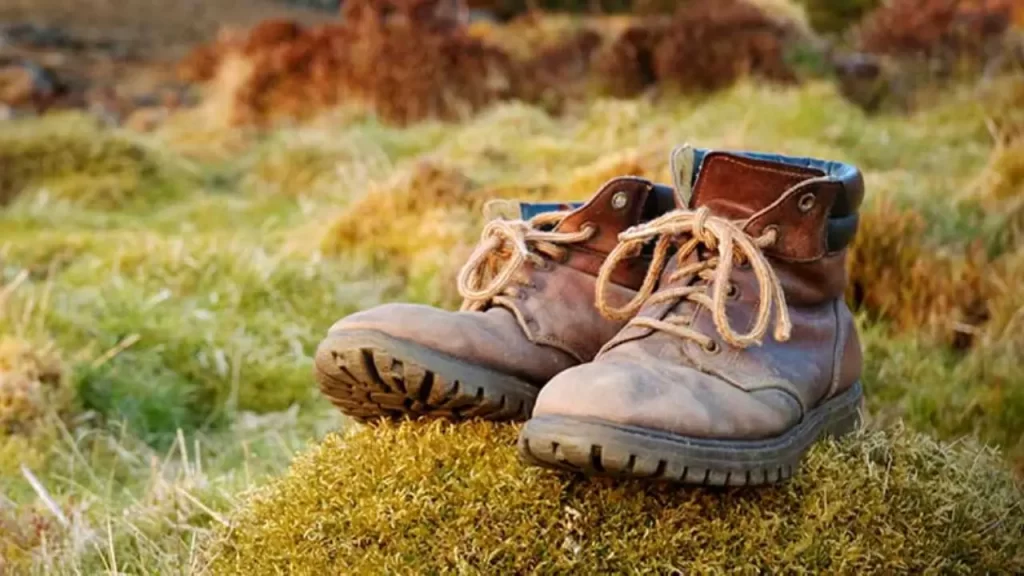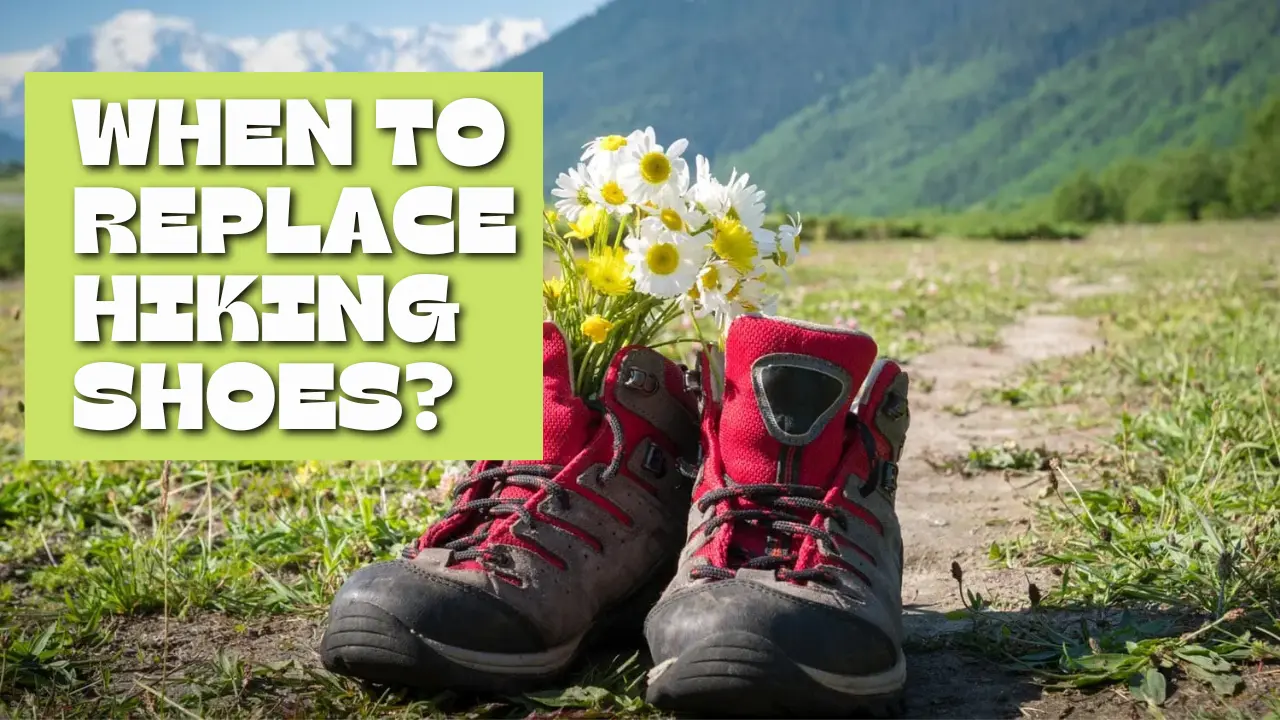The average pedestrian who climbs about 10 miles per week must replace their boots every 500 to 1,000 miles. The quality of your boots will play an essential role in whether you are included in that range.
No matter what boots you have—about 1,000 miles—there must be clear signs that it’s time to retire older couples and invest in new ones.
Thinking about when to replace hiking shoes? Your hiking shoe life depends on the quality and expertise behind the construction of boots.
But, there are several clear indicators that you should consider as the most significant way to determine the shape of your boots and if it’s time to throw them. And in this article, I’ll share them, so keep reading!
Also, read this: Top 6 Best Badminton Shoes | Best Guide You Ever Need, 2022

The Signs you need to Change your Boots
Of course, many indicators must tell you that this is time to get a pair of new hiking shoes when you think of “when to replace hiking shoes”. It includes cracked skin, peeling soles, and other signs that no longer serve their purposes. But, some indications are less open.
Appearance
Before going on my next hiking trip, I always examine my footwear meticulously. My hiking boots, like a reliable pair, stick with me through thick and thin, surviving not only the distance but also the mud, rocks, and other risks of the outdoors.
While a little dirt may seem harmless, too much might make boots stiff and less breathable. This is not right for lengthy, strenuous hikes. So, if boots begin to appear a little worn out, it’s likely that they’ve served their purpose.
Upper and Stitching Materials
Imagine you’re about to go hiking. You pick up your favorite boots and check them thoroughly. You’re looking at the outer – the leather, fabric, or synthetic material that makes up the boot’s upper. You are looking for cracks, rips, or tears. These aren’t only cosmetic problems; they can interfere with the boot’s structure, causing more problems later on.
Now, look at the stitches. It’s like the glue that keeps your boot together. If you notice any fraying or separation on the top layer or around the sole, this is a red flag. It’s as if your footwear is telling you it’s time to consider getting a new pair.
Why? Poor stitching might weaken your footwear. It’s like a chink in the armor. And it’s not just about the structure; it can also affect the boot’s capacity to keep water out.
Don't forget to Check the Rope
For your answer to “when to replace hiking shoes”, every part of your boots that secure or accommodate your rope is far more critical than mostly giving credit to him. Your rope, hole, and loop are responsible for keeping your feet and ankles safe and stable during your increase. When this area is compromised, your injury risk increases exponentially.
Shock is a hole in hiking shoes or shoes that your rope goes through. Some hiking shoes have a hole, while others have a loop, which is usually made of metal and lined up where the eye hole is usually located. Hiking footwear with a poor, loving loop is an eye hole that can cause discomfort, pain, and injury with time.
High boots mainly consider this problem because the rope provides an exponential amount of ankle support. If you notice that your lofty strap starts to peel from your boots or there is a crack around the eyes, it is usually a good indication that it’s time for a substitute couple. This is for you when you think about when to replace hiking shoes.
Shape
While checking your hiking boots, pay close attention to their shape. If they begin to appear deformed, flatter, imbalanced, or wider than they used to be, it’s time to replace them. Boots that have lost their natural shape can reduce your trail stability, increasing the chance of injury and falls. So, if your boots begin to show these indications, it’s time to consider purchasing a new pair. Safety comes first, after all.
Insoles
Insoles, usually built of EVA foam, are the backbone of any decent shoe, providing necessary support and cushioning. Hiking might be difficult if the insoles are worn out, especially when the cushioning degrades. The brand or size labels on the insole are likely to fade over time, although there are certain warning indications. A fresh pair of hiking boots may be necessary when these signs begin to appear too.
Midsole
The midsole is a crucial part of any hiking shoe, offering comfort by cushioning the impact on your joints. It’s similar to the transparent air pockets found in early Nike Air and other modern shoes. Compression lines can cause hiking boots’ padding to wear down, crack, or shatter over time. This not only causes discomfort in the shoe, but it can also pose a safety issue if the tread separates from the midsole. If you find any issues in the midsole, it’s time to replace your hiking boots. A simple press test will help evaluate whether the midsole is still in good condition or beyond repair.
Tread
Hiking footwear require proper treadwear. A lack of grip might increase the chance of slipping and falling. Hiking boots come in a variety of tread patterns to suit different hiking styles, with most featuring moderate to deep treads for optimal traction in every situation.
Your walking style and body type can influence how your boots wear. For example, if you pronate, the inner side of your shoe may wear down faster. Overpronators will experience increased wear around the ball of the foot and toes. Supinators might feel extra wear on the outside side. Neutral walkers typically have even wear across the sole. It’s crucial to inspect the entire bottom of your hiking boots,.
Poor Ankle Support
The support given to your ankles with your hiking shoes is critical to prevent injury or tension on your ankle. Having the proper support ensures that you do not convey damage to your knee or even your hips.
Odd support for your hiking shoes can make you too compensated by your footing to increase stability to the legs that are not poorly supported. It causes you to be heavier on your other feet, which can cause injury.
If you see that your ankle does not feel as supported or firm as when you started wearing boots, you will most likely look at the ankle support. If you see that it becomes too obsolete, soft, flat, or thinner than the first, then it’s time for a pair of new boots.
New pain
Listen to your feet and feet. They are the heart of your way! If you often experience discomfort or pain in your feet, feet, hips, or even your back, it might be a sign that your hiking shoes no longer function as they should. Experiencing new pain throughout your lower body during the increase is one of the most obvious signs you need to change your hiking shoes.
When every part of the soles or tread becomes obsolete, it puts you at a higher risk of injury. It is because it can cause your feet to slide more in shoes, which reduces your stability, or allows your ankle to bend in a way that should not, which will add stress on your joints.
Don’t take the opportunity when you come to your pain and discomfort. Using old hiking shoes or being in bad condition can significantly affect your health, which might mean you cannot climb for a long time when you recover.
Take Care of your Feet
While no one is eager to spend more money on hiking equipment, you must take care of your feet. Show them, love! They bring you so far to your increase, and they must be treated adequately.
The best way you can protect not only your feet but your whole body is by wearing boots that are in good condition. It will ensure that your legs and ankles are safe and well protected during your increase, which will help protect your entire body.
When do you Need to Buy new Hiking Shoes and When to replace Hiking Shoes?
You need to buy new hiking shoes for a long time, starting to get tired and no longer provide the support and protection you need. Look for signs of wear, such as holes in soles, the rope in a rope, and a damaged eye hole.
Before buying, above factors must be considered, including the terrain that you live in, your weight, and how often you travel. How often you come out determines “when to replace hiking shoes” more often than others with a frequent Trex.
When you are hiking, your feet are the most important thing. If you wear the wrong shoes, they can cause blisters and other problems. So, knowing when to buy new boots and when not is essential.
If you climb the same pair of boots every day, it will destroy it quickly, and they will not be as comfortable or supportive as before. So, you must replace it after six months of use if you climb every day, or after one year if you only do it once a week.
Conclusion
Whether you walk through rocky fields or make a relaxed increase through lighter grasslands, the boots you choose to wear are essential factors in the success of your increase.
Although hiking shoes are essential, it can be challenging to find when to replace them. Even if you only use top-of-the-line hiking equipment, time, and wear and even defeat even the best of hiking, they all have an expiration date.
Also, read this: How To Waterproof Golf Shoes? | Best And Ultimate Guide, 2022
Frequently Asked Questions
Can worn-out laces be a sign to replace hiking boots?
Old laces can be replaced, but they may also be a sign that the boots are getting old. It is best to look at the general condition of the boots.
Can I replace hiking boots based on their age?
Age is not the best indicator because it relies on usage. Nevertheless, the materials may have deteriorated if your boots are several years old and haven’t been worn in a long time.
Do I need to replace my hiking boots if they’re no longer waterproof?
If your boots are no longer waterproof despite regular care and treatment, it may be time to consider getting a new pair, especially if you frequently hike in damp situations

